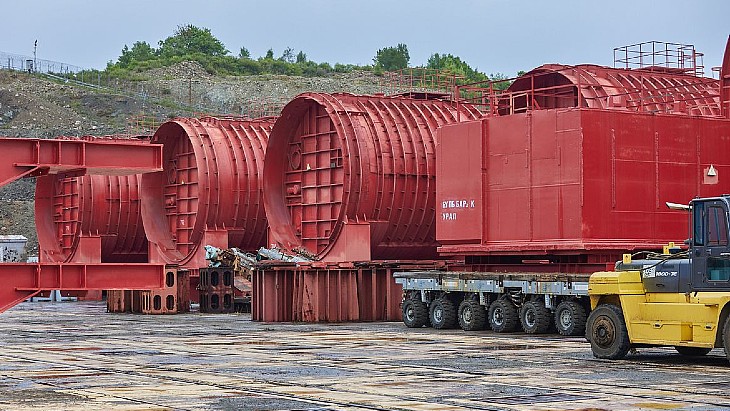Liquid waste removal progress at Sellafield silos
 The removal of two million litres of liquid radioactive waste from silos used to store swarf waste from Magnox fuel reprocessing at the UK's Sellafield site marks a significant hazard reduction milestone, according to Sellafield Ltd.
The removal of two million litres of liquid radioactive waste from silos used to store swarf waste from Magnox fuel reprocessing at the UK's Sellafield site marks a significant hazard reduction milestone, according to Sellafield Ltd.The removal of two million litres of liquid radioactive waste from silos used to store swarf waste from Magnox fuel reprocessing at the UK's Sellafield site marks a significant hazard reduction milestone, according to Sellafield Ltd.
.jpg) |
| The Magnox Swarf Storage Silo (Image: Sellafield Ltd) |
The company said the removal of the liquid has "halved the radioactive content of some of its historic liquid nuclear waste, significantly reducing the potential hazard posed by a fifty year old waste store."
The Magnox Swarf Storage Silo (MSSS) project was built to accommodate the swarf waste produced by the decanning of Magnox fuel prior to reprocessing. The swarf was stored underwater, and the first facility of six silos began operations in 1964. By 1983 a total of 22 silos had been built, but by the early 1990s wet storage of Magnox swarf was superseded by dry storage.
The Magnox Encapsulation Plant was built to receive dry Magnox swarf, encapsulate it in cement and seal it in stainless steel drums. The MSSS is now being decommissioned, but all the waste stored in the silos, including the water in which the swarf is submerged, must be removed before the building can be demolished.
"Engineers designed a system to purge the water by pumping it out of the store, and then use a clever chemical process to remove the radioactivity from it, with fresh water replacing it in the store, making the plant safer and the job of receiving the swarf easier," Sellafield said.
The company noted that since the program started to remove the liquid waste less than five years ago, two million litres has been pumped out.
MSSS head Chris Halliwell said the liquid waste so far removed contained some 10,000 terabequerels of radioactivity. "The radioactivity we've removed and treated arose from several hundred tonnes of uranium fuel which during its lifecycle would have generated enough electricity to power over 11 million homes for a year," he added.
"Completion of this liquor transfer from the MSSS is an important step towards emptying the silos, processing the waste and safely decommissioning this legacy plant," Halliwell said.
Sellafield said the next step will be to remove the solid waste from the silos, process it and encapsulate if for long-term storage. Three silo emptying plants are currently being built, the first of which will be delivered to the site later this year. After undergoing testing, this should be available for solid waste retrievals in 2017.
Researched and written
by World Nuclear News
_17992.jpg)
_75800.jpg)








_88592.jpg)

